Introduction

Overview of Mount Fuji as a Cultural Icon
Mount Fuji, a majestic presence at 3,776 meters, epitomizes the beauty and spirit of Japan. It is more than just a mountain; it represents the country’s cultural and artistic soul, capturing the imagination of poets, artists, and adventurers. With its perfect cone shape and serene surroundings, Mount Fuji symbolizes tranquility, inviting travelers to connect deeply with both nature and Japanese traditions.
Importance of Discovering Hidden Gems
While visiting the prominent attractions of Mount Fuji offers a thrilling experience, the hidden gems that lie in its vicinity are equally captivating. These less-known destinations promise unique escapades away from the bustling crowds, providing opportunities for deeper interaction with the local culture and the natural environment. Each hidden gem brings its unique charm, fostering unforgettable experiences and memories.
Purpose of the Article
This article aims to guide you through six enchanting hidden gems around Mount Fuji—each one an adventure waiting to be unearthed. From tranquil lakes to mystical forests that whisper tales of old, these spots will make your journey an enriching exploration of Japan’s magnificent landscape.
The Enchanting Lake Kawaguchi
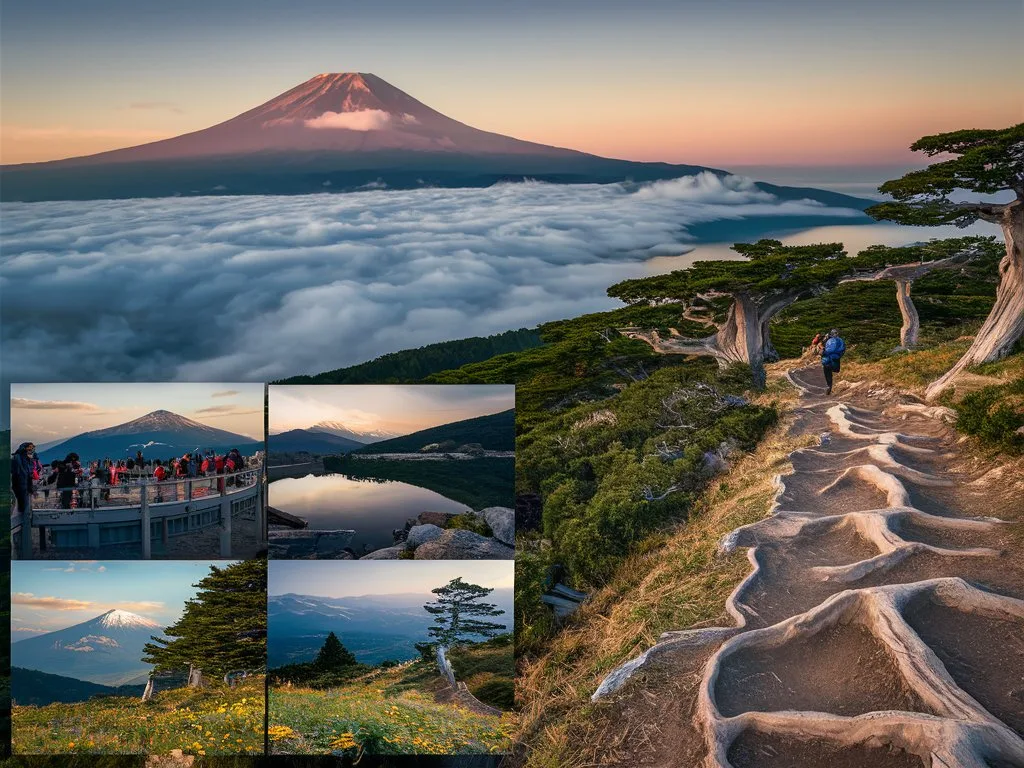
Scenic Views and Photography Opportunities
The Best Spots for Panoramic Views
Lake Kawaguchi is famous for its mesmerizing vistas that frame Mount Fuji beautifully. The northern shore, particularly near Oishi Park, provides ample opportunities for stunning photographs. Capture the breathtaking blend of the blue lake and the towering peak.
Seasonal Changes and Their Impact on Scenery
Each season at Lake Kawaguchi unveils a different masterpiece. The spring blooms of cherry blossoms contrast with the serene lake, while autumn ignites fiery hues of red and gold, making every visit a truly picturesque experience.
Unique Lighting Conditions
Early mornings and late afternoons are when Lake Kawaguchi transforms into a photographer’s paradise. The sun reflects off the water, casting a shimmering glow that showcases Mount Fuji’s grandeur—perfect for those Instagram-worthy shots.
Local Cuisine and Dining Experiences
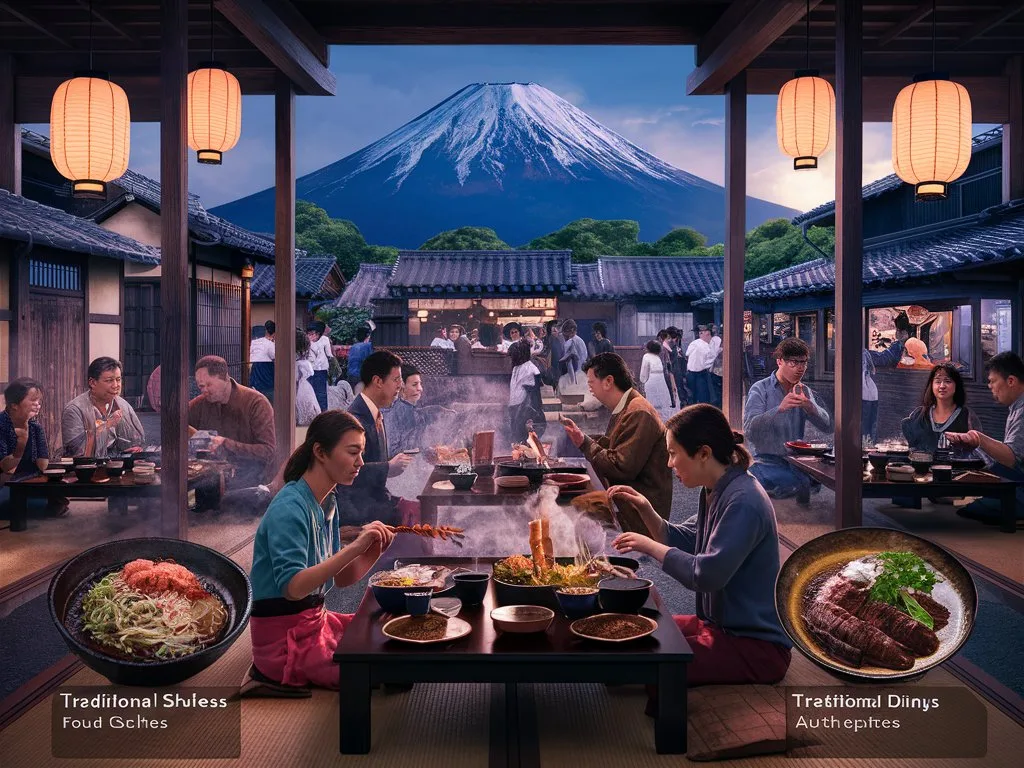
Traditional Dishes to Try
While visiting Lake Kawaguchi, dive into local delicacies such as Hoto, a soul-soothing noodle soup. Enjoy meals at family-owned restaurants, where the recipes carry generations of tradition, offering a taste of authentic Japanese flavors.
Restaurants with Mountain Views
Expect delightful dining spots like Fujiyama Soba, which not only offers delicious food but also panoramic views of Mount Fuji. Picture savoring a warm bowl of noodles while gazing at the majestic mountain—an experience to relish.
Popular Food Markets
Don’t miss out on the Kawaguchi Food Market, where local vendors present an array of fresh produce and snacks. This vibrant market is perfect for sampling local offerings and enhancing your culinary adventure.
Activities and Recreation
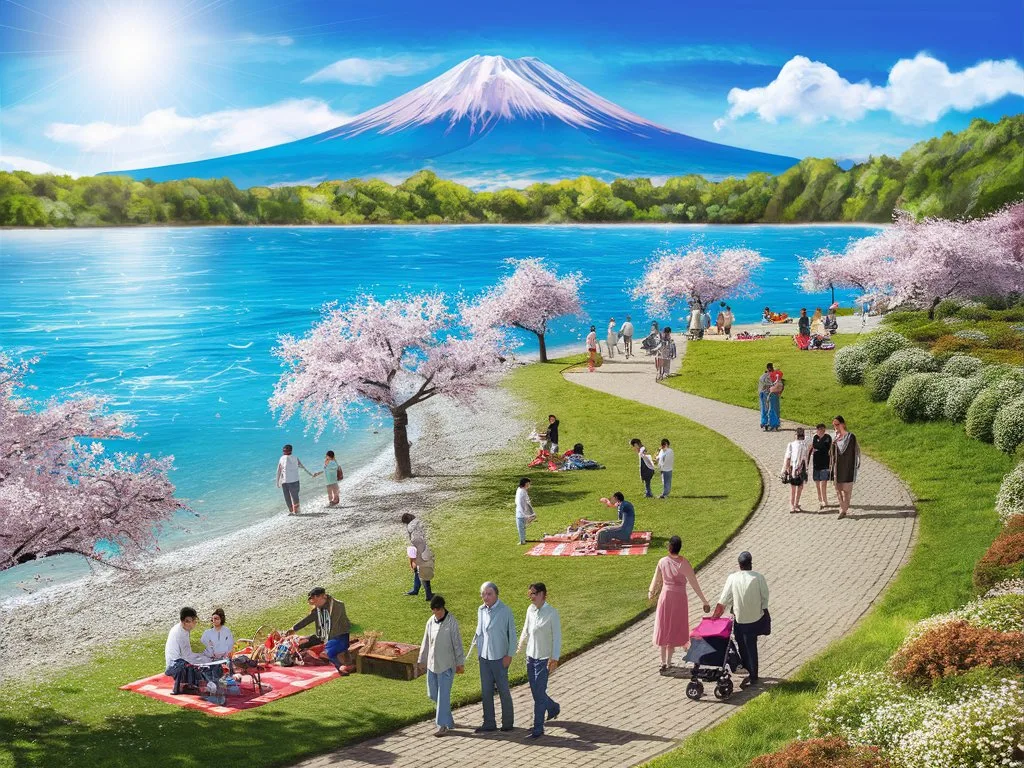
Lakeside Walks and Picnics
A stroll along the shimmering lakeside is perfect for unwinding. The gentle sound of waves lapping the shore creates a peaceful atmosphere ideal for picnics and immersion in nature.
Boat Rentals and Water Sports
Rent a pedal boat or kayak on Lake Kawaguchi. Gliding over the serene waters with Mount Fuji in view is a memorable experience, adding an adventurous touch to your visit.
Cultural Events and Festivals
If your visit aligns with the Biwako Fireworks Festival in early August, be sure to attend. The spectacular fireworks illuminating the sky while reflecting in the lake create a magical atmosphere that shouldn’t be missed.
The Majestic Aokigahara Forest
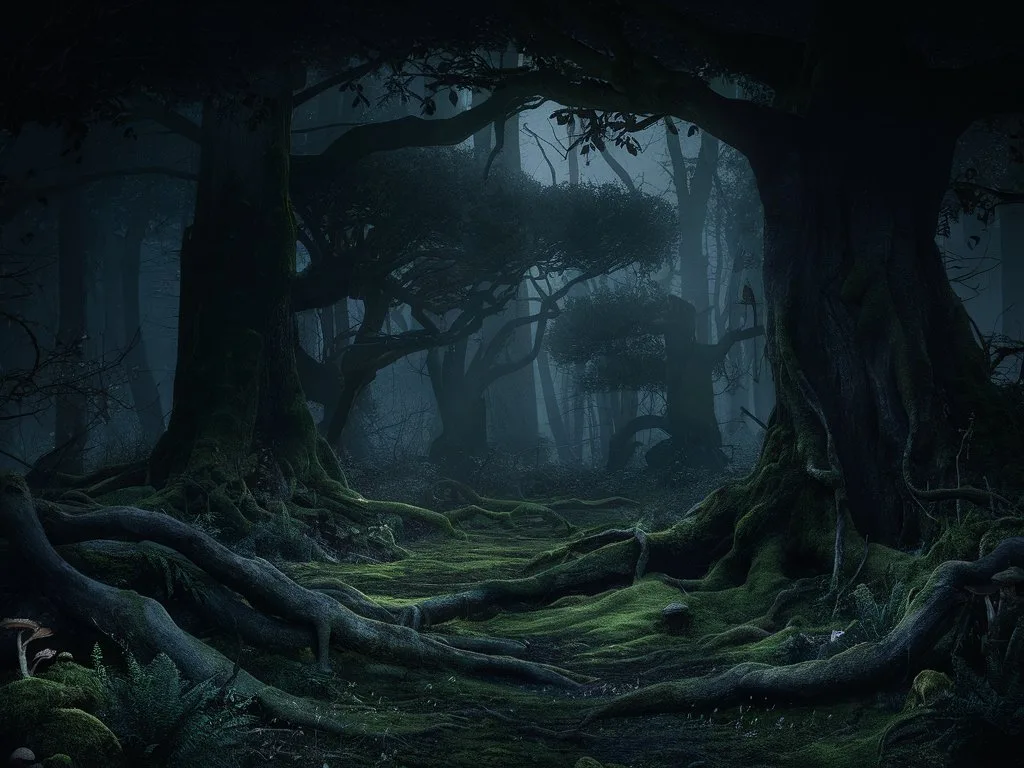
Exploring Aokigahara’s Unique Ecosystem
Flora and Fauna
Often referred to as the “Sea of Trees,” Aokigahara boasts a rich biodiversity. The forest is filled with ancient trees and moss-covered rocks, creating a unique ecosystem that envelops visitors in a serene embrace.
Geological Features and Lava Tubes
The intriguing terrain of Aokigahara features geological wonders, including natural lava tubes. Exploring these fascinating formations offers insight into the region’s volcanic history.
Educational Tours and Guides
Joining a guided tour enhances your experience of Aokigahara. Knowledgeable guides share insights about the ecology and cultural significance of this mystical forest.
Hiking Trails for All Levels
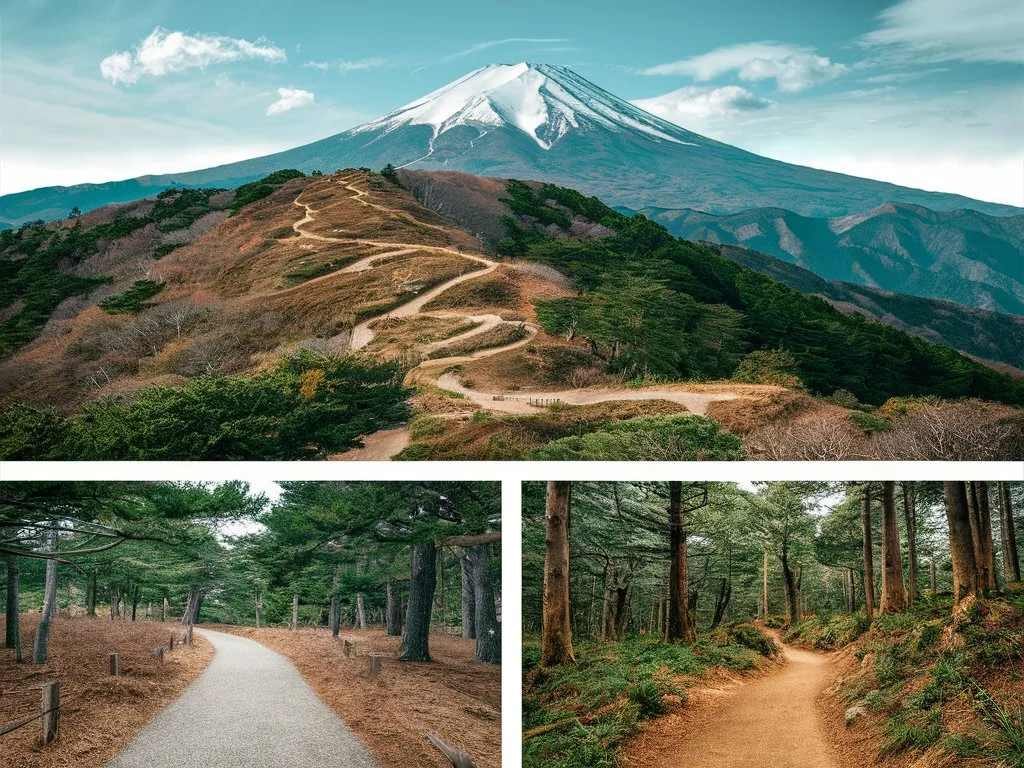
Beginner-Friendly Trails
Aokigahara offers trails suitable for everyone, including families and beginners. The “Green Path” provides easy walking with gentle slopes and scenic vistas.
Challenging Routes for Experienced Hikers
For seasoned adventurers, trails like the “Jukai Lake Trail” offer more challenging hikes. Ensure you are well-prepared for varying conditions to fully enjoy the beautiful landscapes.
Safety Tips and Regulations
Always stick to marked paths throughout Aokigahara and carry sufficient water. Having a map or GPS app is advisable, as the forest can be disorienting for inexperienced hikers.
Cultural Significance and Folklore

Legends Associated with the Forest
Packed with local folklore, Aokigahara is considered a place of lost souls—where stories tell of spirits mingling within the trees, making it an intriguing spot for those fascinated by the mysterious.
Temples and Spiritual Sites
Dotted within the forest, you can find hidden shrines that reflect the spirituality of the locale. Visiting these sites provides a peaceful retreat from the outside world.
Community Efforts in Preservation
Local communities are committed to preserving Aokigahara’s beauty, taking part in conservation efforts to ensure this unique ecosystem thrives for generations to come.
The Hidden Village of Oshino Hakkai

Traditional Architecture and Cultural Heritage
Historical Background of the Village
Oshino Hakkai exudes charm with its traditional Japanese architecture. This serene village transports visitors back in time, showcasing the simple yet profound lifestyle of its inhabitants.
Architectural Styles and Features
The rustic houses adorned with thatched roofs capture the essence of authenticity, reflecting harmony with nature. Strolling through its streets allows visitors to appreciate the village’s rich heritage.
Preservation Efforts and Local Involvement
Residents are actively involved in preserving Oshino’s history and culture, often hosting community events that invite visitors to engage and learn about their traditions.
The Eight Springs of Oshino
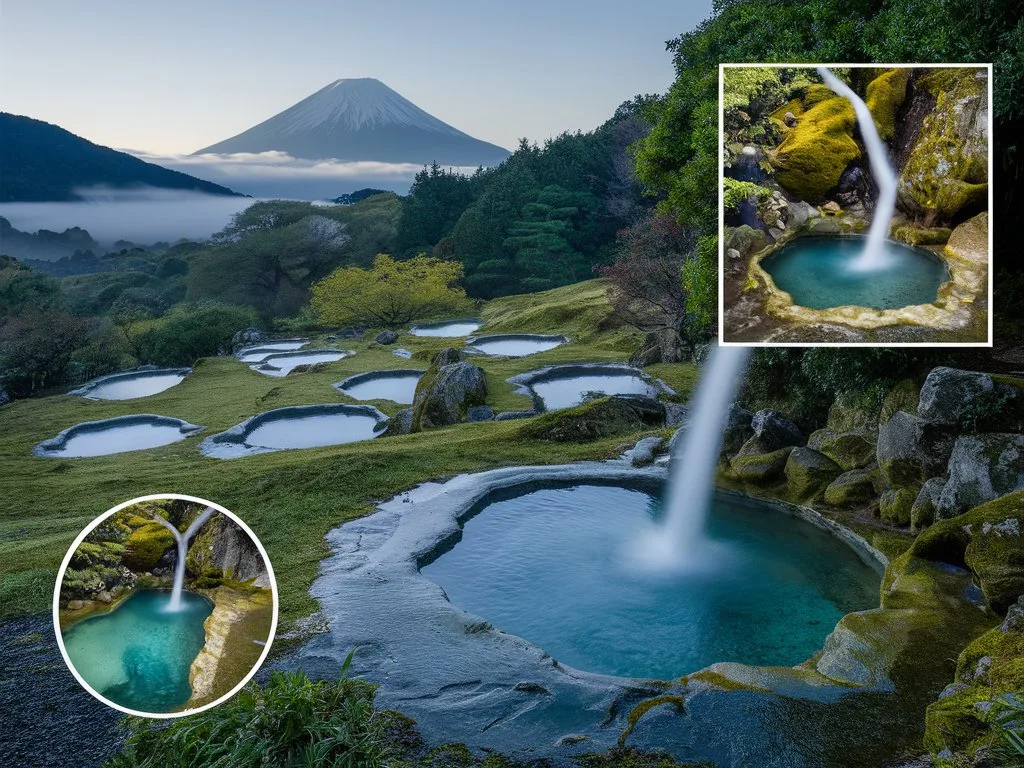
Sources and Their Importance
Oshino Hakkai is renowned for its eight natural springs, each possessing unique characteristics. These springs nourish local rice fields and contribute to the area’s agricultural richness.
Visiting Guidelines and Best Practices
When exploring the springs, prioritize cleanliness and respect for nature. Bringing reusable bottles can help minimize waste and preserve the pristine environment.
Myths and Local Stories Associated with the Springs
Local tales often link these springs to life and prosperity, adding a layer of significance to your visit. Engaging with these stories connects you deeper to the local culture.
Engaging with Local Artisans

Crafts and Handicrafts Unique to the Area
Oshino Hakkai is a treasure trove of traditional crafts such as weaving and pottery. Visiting local artisan workshops allows you to witness these skilled crafts firsthand.
Workshops and Learning Opportunities
Participate in workshops offered by artisans, providing a hands-on opportunity to create your own art. This engagement enriches your understanding of Japanese culture and craftsmanship.
Supporting Local Businesses
Purchasing handmade crafts is a wonderful way to support local artisans. Each piece carries a unique story and serves as a beautiful reminder of your journey.
The Serene Hakone Area
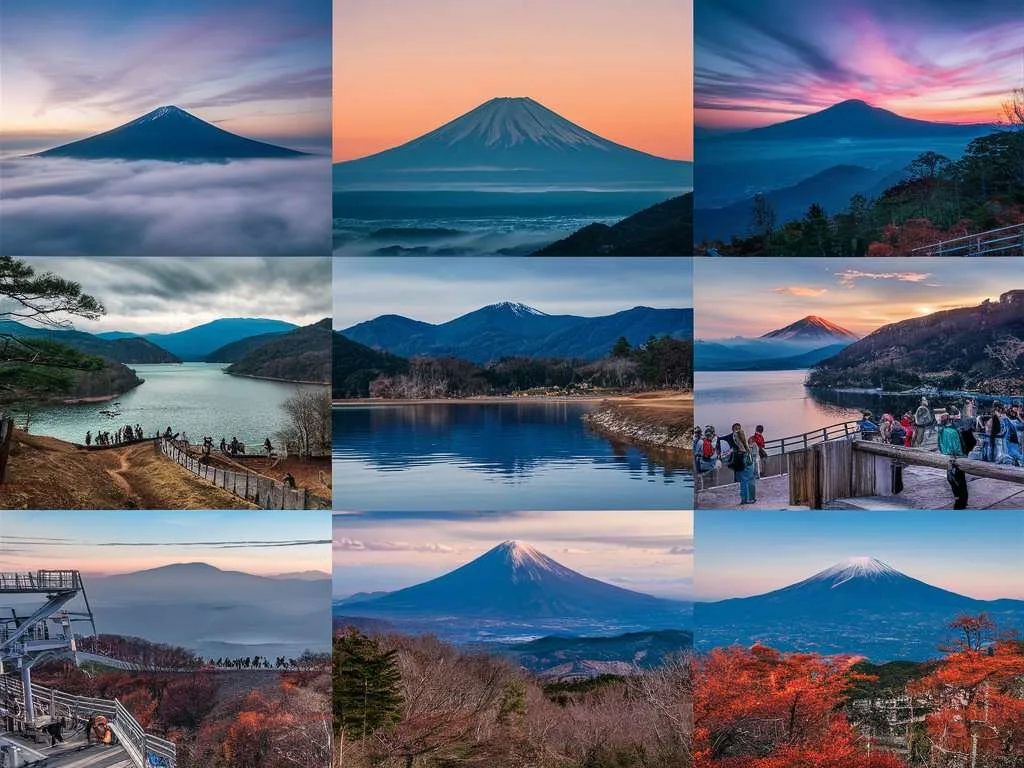
Breathtaking Views of Mount Fuji
Best Viewing Spots in Hakone
For stunning views of Mount Fuji, the Owakudani Valley in Hakone is a must-visit. Here, the vistas of the iconic peak are truly unmatched.
Time of Day for Optimal Views
Early mornings present the best opportunity to enjoy clear views of Mount Fuji, as the skies are often cloud-free, revealing the mountain’s full glory.
Photography Recommendations
Bring a wide-angle lens to capture stunning shots of Mount Fuji alongside the surrounding landscapes. The early morning mist adds a magical touch ideal for photography.
Natural Hot Springs and Relaxation
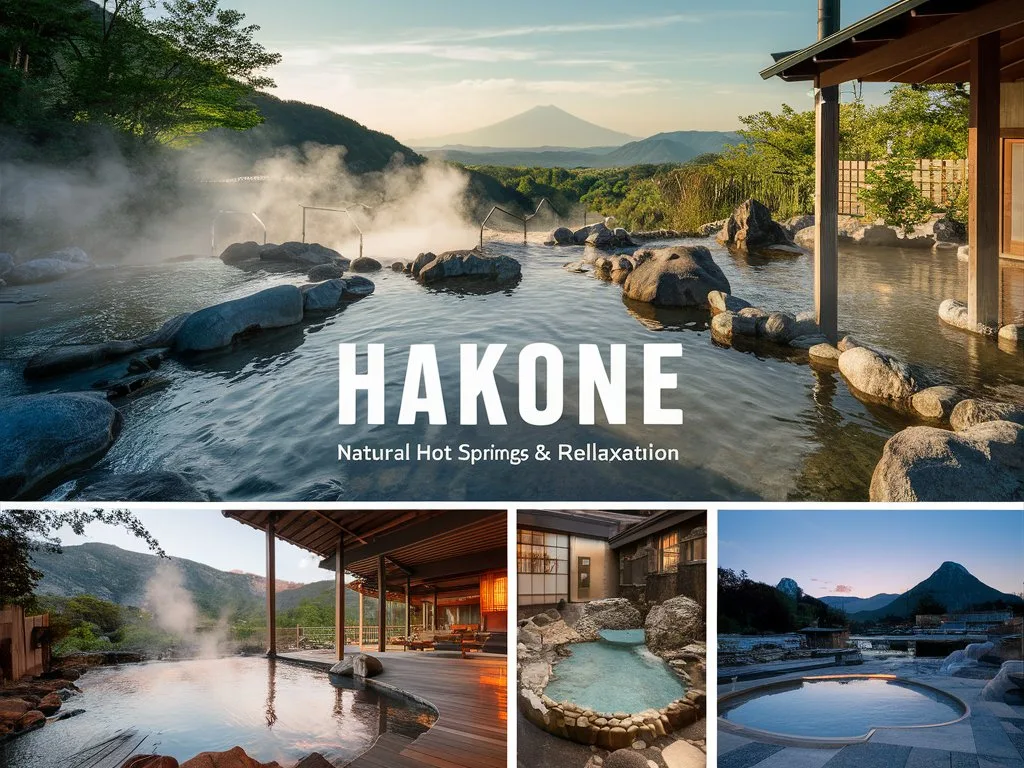
Popular Onsen and Spa Options
Hakone is celebrated for its onsen, with traditional inns like Yunessun Spa Resort offering relaxing bathing experiences that are not only enjoyable but also rejuvenating.
Benefits of Onsen Culture
Enjoying an onsen can relieve stress and promote skin health. Embracing this cultural ritual allows visitors to connect with an important aspect of Japanese lifestyle.
Etiquette and Tips for First-Timers
When engaging in onsen bathing, be mindful of etiquette—wash thoroughly before entering the baths and embody a respectful demeanor to maintain the peaceful atmosphere.
Art Museums and Cultural Experiences

Notable Museums and Exhibitions
Visit the Hakone Open-Air Museum, known for its stunning outdoor art installations. This museum beautifully merges art with nature, providing an unforgettable experience.
Outdoor Art Installations
Stroll through museum gardens dotted with unique sculptures. The blending of artistic creativity and natural beauty enhances the overall experience.
Local Events and Cultural Festivals
Depending on your visit, you may catch local festivals celebrating traditional arts. This is an excellent chance to immerse yourself in Japanese culture and enjoy the festivities.
The Historical Sites of Fujiyoshida
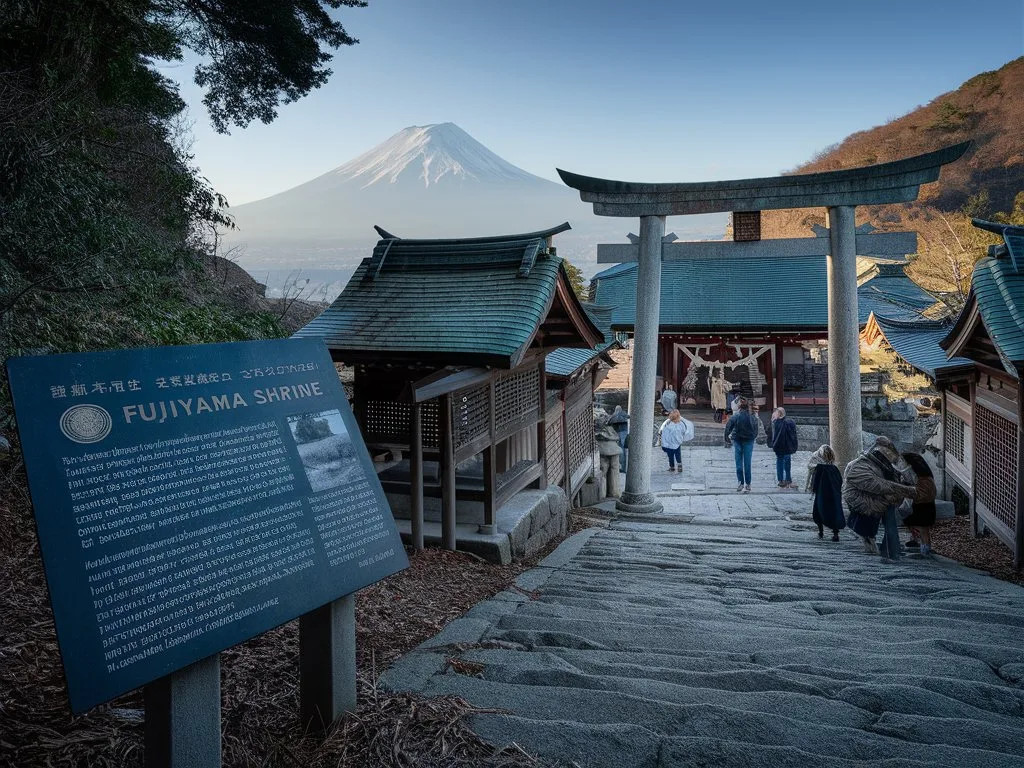
The Birthplace of Fujiyama Shrine
History and Significance of the Shrine
Nestled at the base of Mount Fuji, Fujiyama Shrine is a site teeming with history. It honors the mountain’s spirit, showcasing the deep cultural reverence afforded to Mount Fuji.
Architectural Highlights and Features
The shrine’s vibrant red torii gates framed by Mount Fuji provide an idyllic scene for visitors. Its tranquil grounds offer a serene atmosphere for reflection.
Festivals and Events at the Shrine
Plan your visit during the annual Fujiyama Matsuri to witness captivating ceremonies and community celebrations that showcase local culture.
The Role of Fujiyoshida in Mount Fuji’s Climbing Culture
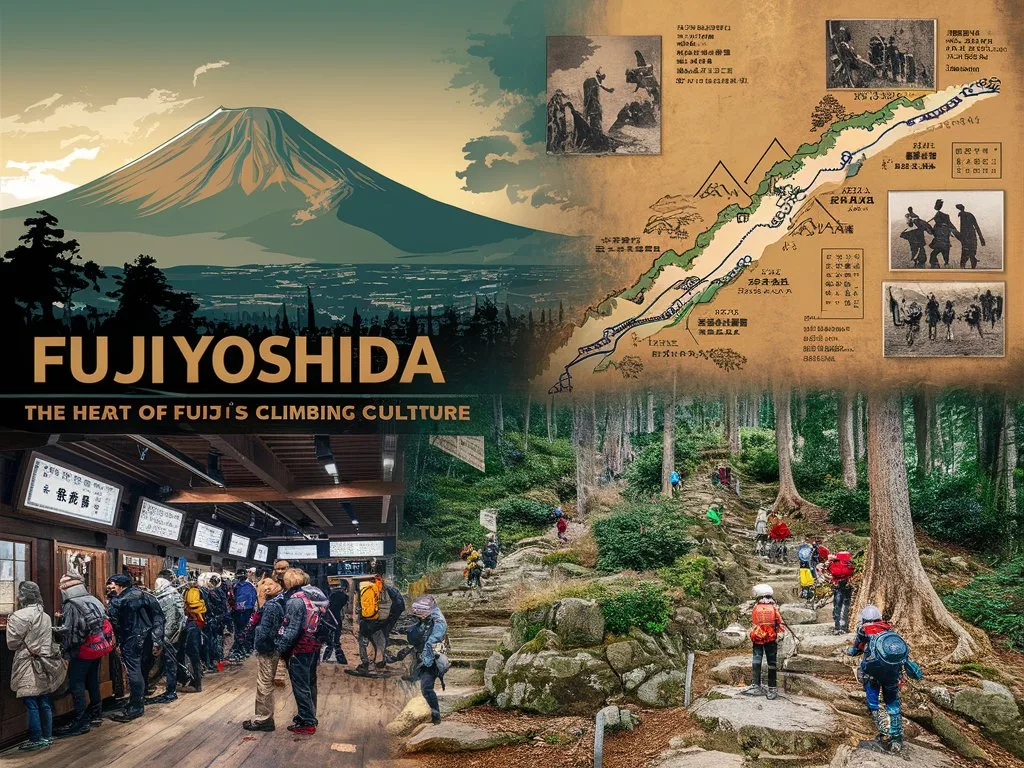
Historical Climbing Routes and Trails
Fujiyoshida acts as a gateway for many climbers embarking on their trek to Mount Fuji’s summit. The Yoshida Trail is the most popular route, attracting adventurers eager to conquer the iconic peak.
Information Centers and Guides
Various information centers throughout the city provide valuable maps and climbing advice, ensuring climbers are well-prepared for their ascent.
Community Involvement in Climbing Culture
Local communities proudly promote their connection to Mount Fuji, offering cultural experiences designed to enhance climbers’ journeys.
Local Markets and Community Life
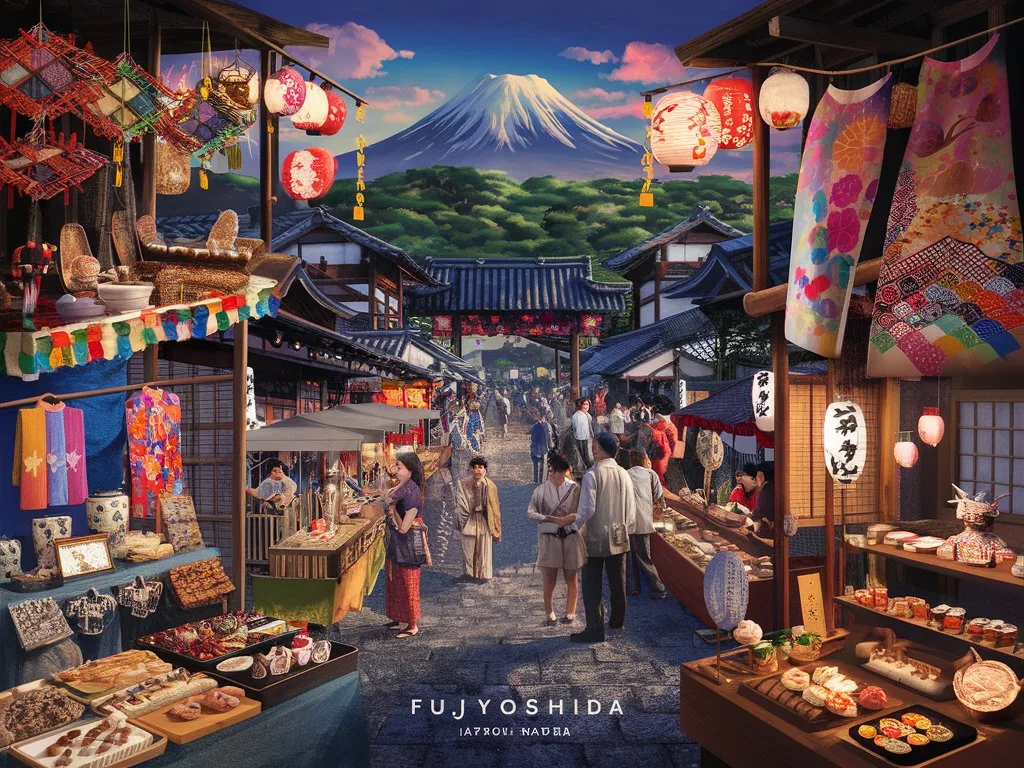
Unique Items to Purchase
Explore local markets to discover unique souvenirs, including traditional crafts and delicious snacks, perfect for taking home a piece of Fujiyoshida.
Seasonal Events and Traditions
Participate in seasonal festivities showcasing local customs, providing insights into the daily lives of those residing in the region.
Interactions with Local Residents
Engaging with locals enriches your experience. Their tales and recommendations may lead you towards discovering hidden spots worth exploring.
The Charm of Fujigoko (Five Fuji Lakes)

Unique Features of Each Lake
Lake Yamanaka: The Largest Lake
Lake Yamanaka, the largest of the Five Fuji Lakes, offers exceptional views of Mount Fuji and provides fantastic fishing and water sports opportunities for visitors.
Lake Kawaguchi: Recreational Activities
As previously mentioned, Lake Kawaguchi is a hub of activity, making it a great spot for leisurely walks and enjoying recreational pursuits.
Lake Saiko: Nature and Wildlife
Known for its serene, quieter atmosphere, Lake Saiko is a haven for wildlife enthusiasts who wish to birdwatch and explore the nature trails surrounding the lake.
Seasonal Activities Around the Lakes

Winter Wonderlands and Snow Sports
In winter, snow transforms the lakes into charming wonderlands perfect for skiing and other snow sports, creating a picturesque backdrop.
Spring Cherry Blossoms
Springtime sees the lakes adorned with beautiful cherry blossoms, perfect for outdoor picnics and photography, inviting nature lovers to indulge in its beauty.
Summer Water Activities
Summertime offers warm weather, enabling visitors to enjoy swimming, kayaking, and paddleboarding—making the most of the outdoor delight.
Eco-Tourism and Wildlife Observation

Best Practices for Observers
While exploring the lakes, be conscious of the local ecosystem. Practicing responsible wildlife watching ensures minimal disruption to the environment.
Guided Tours and Eco-Friendly Practices
Consider joining guided eco-tours that prioritize conservation and promote understanding of local wildlife while appreciating breathtaking views.
Wildlife You Might Spot
Diverse wildlife inhabits the lakes, from various bird species to aquatic life. Take the time to appreciate the unique species that coexist in this beautiful setting.
Conclusion
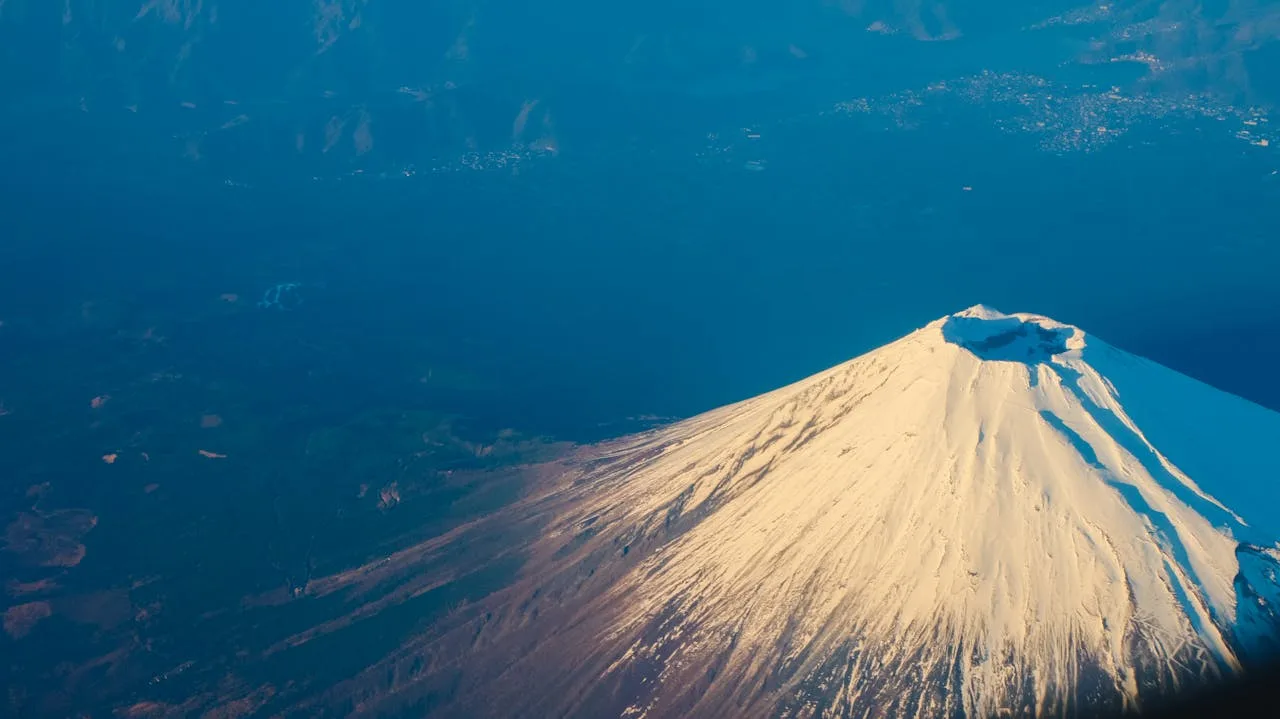
Recap of Hidden Gems Explored
Throughout our journey exploring the hidden gems surrounding Mount Fuji, we have uncovered destinations that offer distinctive experiences. From the serene lakes to the enchanting forests, there is so much awaiting discovery beyond the mountain itself.
The Enrichment of a Unique Mount Fuji Experience
Delving into these lesser-known spots not only enhances your travel experience but also deepens your appreciation for the region’s culture and natural wonders.
Call to Action for Responsible Tourism
As you plan your visit to Mount Fuji, remember to engage in responsible tourism, leaving a positive impact on these beautiful locales. Embrace the adventure, respect the environment, and honor the communities that call these hidden gems home. Happy exploring!
FAQ
1. What is Mount Fuji?
Mount Fuji is Japan’s tallest mountain, at 3,776 meters (,389 feet). It is an iconic stratovolcano known for its symmetrical cone shape and is a UNESCO World Heritage site.
2. Where is Mount Fuji located?
Mount Fuji is located on Honshu Island, about 100 kilometers (62 miles) west of Tokyo and 50 kilometers (31 miles) southwest of Yokama.
3. When is the best time to visit Mount Fuji?
The best time to visit Mount Fuji is during the climbing season, which typically runs from early July to early September. The weather is generally mild during this period, making it safer for hikers.
4. How can I get to Mount Fuji from Tokyo?
You can reach Mount Fuji from Tokyo by taking a train to either Kawaguchi Ko Station or Fuji Station, followed by a bus. The journey takes about two to three hours, depending on your chosen route.
5. What activities can I do at Mount Fuji?
Visitors can enjoy various activities at Mount Fuji, including hiking, sightseeing, taking photographs, visiting hot springs, and exploring nearby lakes and parks.
6. Is climbing Mount Fuji challenging?
Climbing Mount Fuji is considered moderate in difficulty. While many people successfully reach the summit, proper preparation, good physical condition, and attention to weather conditions are important.
7. Are there facilities for climbers on Mount Fuji?
Yes, there are mountain huts along the climbing routes where climbers can rest, buy food, and even stay overnight. It’s advisable to book these in advance during peak season.
8. Can I see Mount Fuji from Tokyo?
Yes, on clear days, Mount Fuji can be seen from various vantage points in Tokyo, particularly from areas like Shinjuku or the Tokyo Metropolitan Government Building’s observatory.
9. What should I pack for climbing Mount Fuji?
When climbing Mount Fuji, pack essentials like sturdy hiking shoes, layered clothing, water, snacks, sunscreen, a hat, and a headlamp or flashlight for early morning or late-night climbs.
10. Are there any cultural considerations to keep in mind when visiting Mount Fuji?
Yes, Mount Fuji is a culturally significant site in Japan. Respect local customs, keep the area clean, and follow guidelines provided by local authorities to ensure a safe and enjoyable visit.

I don’t think the title of your article matches the content lol. Just kidding, mainly because I had some doubts after reading the article.
I don’t think the title of your article matches the content lol. Just kidding, mainly because I had some doubts after reading the article.
Your point of view caught my eye and was very interesting. Thanks. I have a question for you.
I don’t think the title of your article matches the content lol. Just kidding, mainly because I had some doubts after reading the article.
Thank you for your sharing. I am worried that I lack creative ideas. It is your article that makes me full of hope. Thank you. But, I have a question, can you help me?
Can you be more specific about the content of your article? After reading it, I still have some doubts. Hope you can help me.
Your article helped me a lot, is there any more related content? Thanks!
I don’t think the title of your article matches the content lol. Just kidding, mainly because I had some doubts after reading the article.
Can you be more specific about the content of your article? After reading it, I still have some doubts. Hope you can help me.
Your point of view caught my eye and was very interesting. Thanks. I have a question for you.